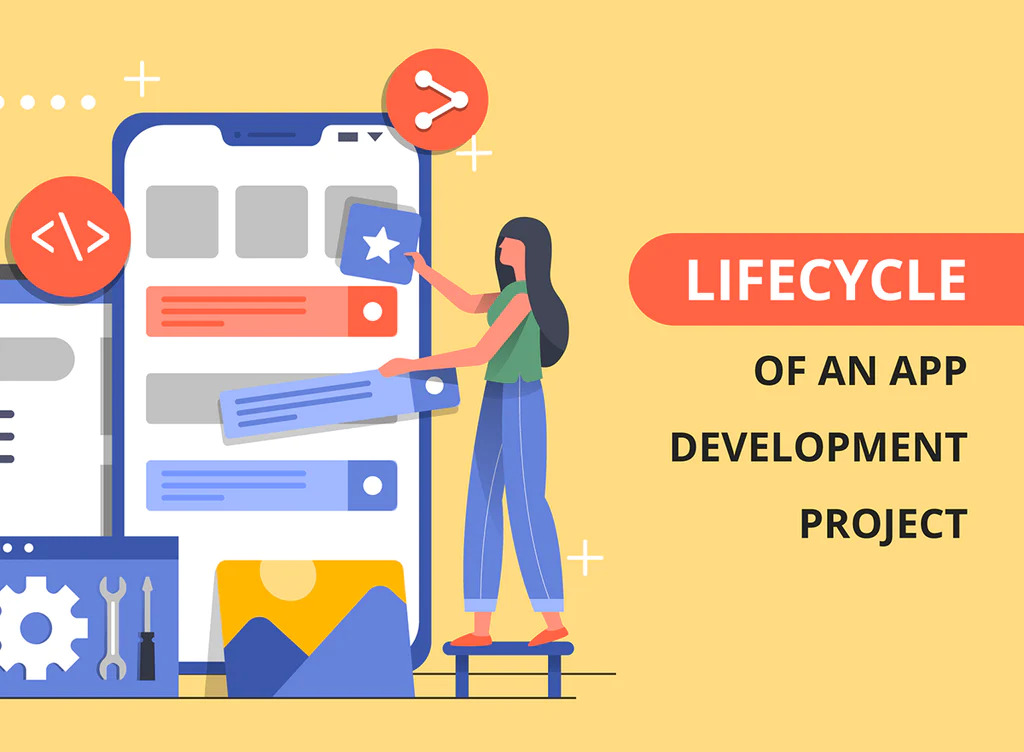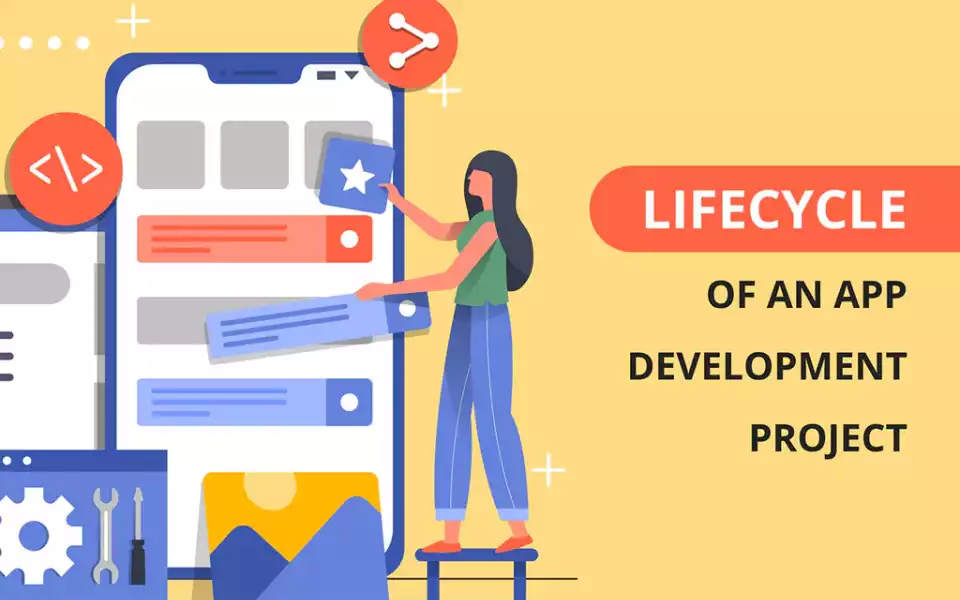
Maybe you have a great new app idea, or maybe you want to work in the industry and become an app developer yourself. Or maybe you’ve just found yourself wondering what it’s like to work in an app development agency, and what goes into planning, making, and releasing a mobile app or web app.
Life moves fast in the world of technology, and as a company operating in a competitive industry we have to be able to keep up with the pace and adapt to changes rapidly. No two days are ever really the same, and you may even find yourself solving problems you didn’t even know existed.
Apps are easy to make though, right?
Well, an app might not be as complicated as a full fledged computer program, but it’s still very technical and requires a lot of technical know-how and specific skills. Regardless of your position, you can find yourself pretty busy at times. There are numerous competing deadlines within every project, and with several teams of developers in our office we often have multiple projects going at once.
How does an agency like ours which does everything in house manage juggling multiple projects while producing high quality apps in such a busy world?
As one of Adelaide’s leading web and mobile app development agencies with a few very well known apps in our portfolio, we’re in a pretty good position to tell you about what it’s like behind the scenes. You can also check out a bit about our history through our year by year review.
So what’s it like working on a project in app development agency?
We’ll walk you through a typical project as we experience it, starting right from the moment you say hi to us.
A typical project flow for us has the following phases:
- Contacting us
- Estimating your project
- Intensive discovery workshop
- Designing the wireframe
- Designing the UX/UI
- Project review
- Coding
- Testing
- App release
- Post release support
*Click on any of the links to jump to that section
So let’s start at the beginning!
You say hi
Hello!
We get requests for quotes and consultation through a variety of channels, and our client and project management team handle all points of contact between clients and internal staff. You may want to chat with one of us in real-time through our website using the chatbot, or maybe you’re more comfortable contacting us through email, or if you’re feeling old school you might just give us a call on the phone and we’ll chat with you in person.
We’ll record your initial contact info and request additional information (if you haven’t sent it already) so that we can work out what we can do to help you. This is usually a creative brief or business requirements document, but could include supporting technical documentation or any legal documents that are necessary for the project to go ahead.
Note: We do not accept NDAs at this point - we handle that after our first meeting, so do not send them yet!
Estimating the project
If you haven’t already, we’ll get you to send your creative brief or business requirements document. The project manager can then begin working out the broad details of what’s needed in your app to provide you with the digital solution you need.
After creating a rough outline of the features and flow needed to create your app idea, the client manager will send back an initial quote and projected timeline. Don’t be surprised if the initial quoted fee is upwards of $20,000 for a web app or $100,000 for a mobile app depending on the features and technical complexity you require for your app.
Don’t worry though, nothing is set in stone yet and you’ll have a chance to remove (or add) features. If you’d like to know more about the creative brief requirements, feel free to send us an email.
Phase duration: about 2 weeks, including all the legal stuff.
Intensive workshop (scoping the project)
Once you’re happy with the initial quote and projected timeline and you’re ready to proceed to the next step, you’ll be invited to book an intensive project discovery workshop where you’ll get to meet a few members of the team in person. During the workshop, we’ll go through the user flow, features, and rough design elements of the app with the team.
Working together, you’ll help us determine the exact needs of the app’s users (whether they are customer, admin, or other), how and why they will be interacting with your app, and we’ll establish some long term goals and boundaries for the project. By the end of the workshop we’ll come away with user stories, a storyboard, and a few screen sketches to guide us through the remainder of the project.
The workshop may take place over the course of one day or several days, depending on the size and scope of the project, and culminates in a refined project scope and development plan that the team will follow over the coming months. You’ll also be given a quote estimate for the design portion of the project based on the features that will make it into the release version.
We get our legal team to make sure everything is in order (and you probably will too), and when we’ve been given the go ahead we move onto the next step - design!
Phase duration: about 2 weeks, including all the legal stuff.
Design: Wireframe
After we’ve taken you through a workshop session, our design team will use the storyboard to put together a basic wireframe outline of the app. This is essentially the skeleton of the app, where we’ll set out screen flow, positions of elements on each screen such as buttons, text boxes and images.
We begin linking the pieces together and make sure we’ve got the flow nailed down while the app is still in this basic skeletal state so that we can make any necessary adjustments before design and development begins.
Phase duration: this section overlaps with the workshop
Design: UX/UI
Skeletons might be cool, but they’re not for everyone. Once the wireframe is finalised, the designers begin applying visual elements to the wireframe with your feedback to ensure the visual look and feel is consistent with your brand brand image and requirements.
By the end of both design phases, we’ll have a prototype of the product with a partially functional screen flow that you can interact with to test the user experience of the app.
Phase duration: about 2 weeks
Project review
Before beginning the development phase we’ll review the project to date with you, and when you’re happy with the direction we’ll send you the final quote for work required to carry out the development phase.
By this point in time, you have a fully prototyped app, but there’s no code driving it yet.
Phase duration: about 2 weeks, including all the legal and financial revision stuff.
Begin coding
Now that everything is mapped out and designed - and once you’ve confirmed you want us to create the software for your app - we get our developers to begin writing the actual code that will drive all functionality within your app. This is the most time consuming part of the process and takes a few months even with a full team of developers working together.
At the beginning of the development phase, get together with the developers to discuss the plan with them, and start setting goals and deadlines. Our agile scrum project management involves regular sprint meetings, so over the course of the development cycle we’ll be continuously fine tuning the code to make sure the final product is efficient, functional, and bug free.
Using a scrum management system means each developer is directly responsible for their own code, which allows them to focus on specific tasks without distraction. With potentially two app development pipelines to monitor for a mobile project - one for Android and one for iOS - this makes it easier to track and monitor progress (and bugs) for individual parts of the project.
Phase duration: about 2 to 4 months, depending on the complexity of your app
Test the app
There’s a whole range of testing we have to perform. You may find yourself thinking “that sounds fun,” but this is an intensive review of the code itself and how your app functions across all levels.
Testing of the app’s code begins early during the development phase and helps us ensure that each component of code going into the app functions properly. During each sprint meeting, the developers will identify known issues and them work to resolve them within the next sprint to ensure nothing sneaks in later.
As we approach the projected release date, our team will begin internally QA testing the app’s user interface and inputs more rigorously to ensure the user experience is of a high standard.
Phase duration: Overlaps with the development phase, with around 2 full dedicated weeks prior to release.
Release the app
Once we’re at the deadline and our developers are satisfied that all the bugs have been squashed, it’s time to release your app! If the project was for the development of a mobile app, then we deploy your app onto the appropriate app stores and begin monitoring its performance, and hand over any code or materials agreed to as part of the contract.
If the project was for the development of a web app, then the process for going live is more gradual. The app may even be partially accessible to the public before the project is fully completed depending on the type of app and what you need (for instance hiding incomplete features behind temporary splash screens).
Post app support
Over the next few weeks after releasing your app onto the appropriate stores, we’ll closely monitor its status and release any updates or hotfixes necessary.
If you’ve contracted us to continue providing updates with additional content for your app after the initial release, then we’ll continue working on development to ensure we meet any deadlines. If the end of the project coincided with the end of our contract, then we will continue to provide bug fixing and technical support, however any additional feature development on your app will require another project plan.
So now you should have a better understanding of what’s involved in running a successful app development agency.
If you’re looking to have an app developed, then get in touch today and organise a free consultation with our team.
